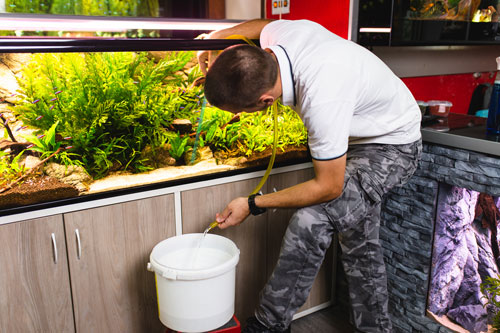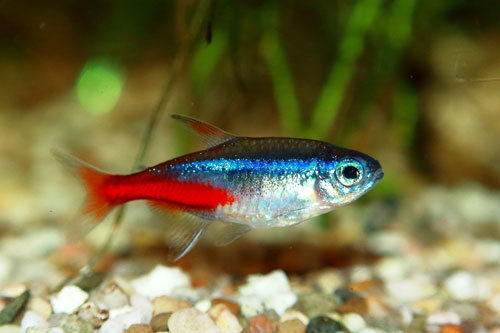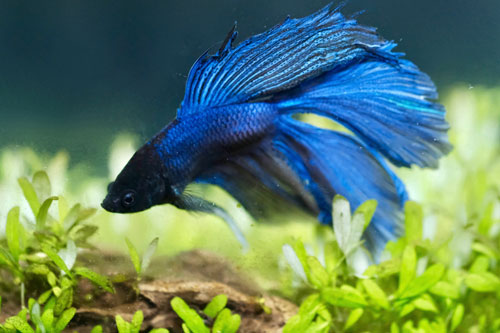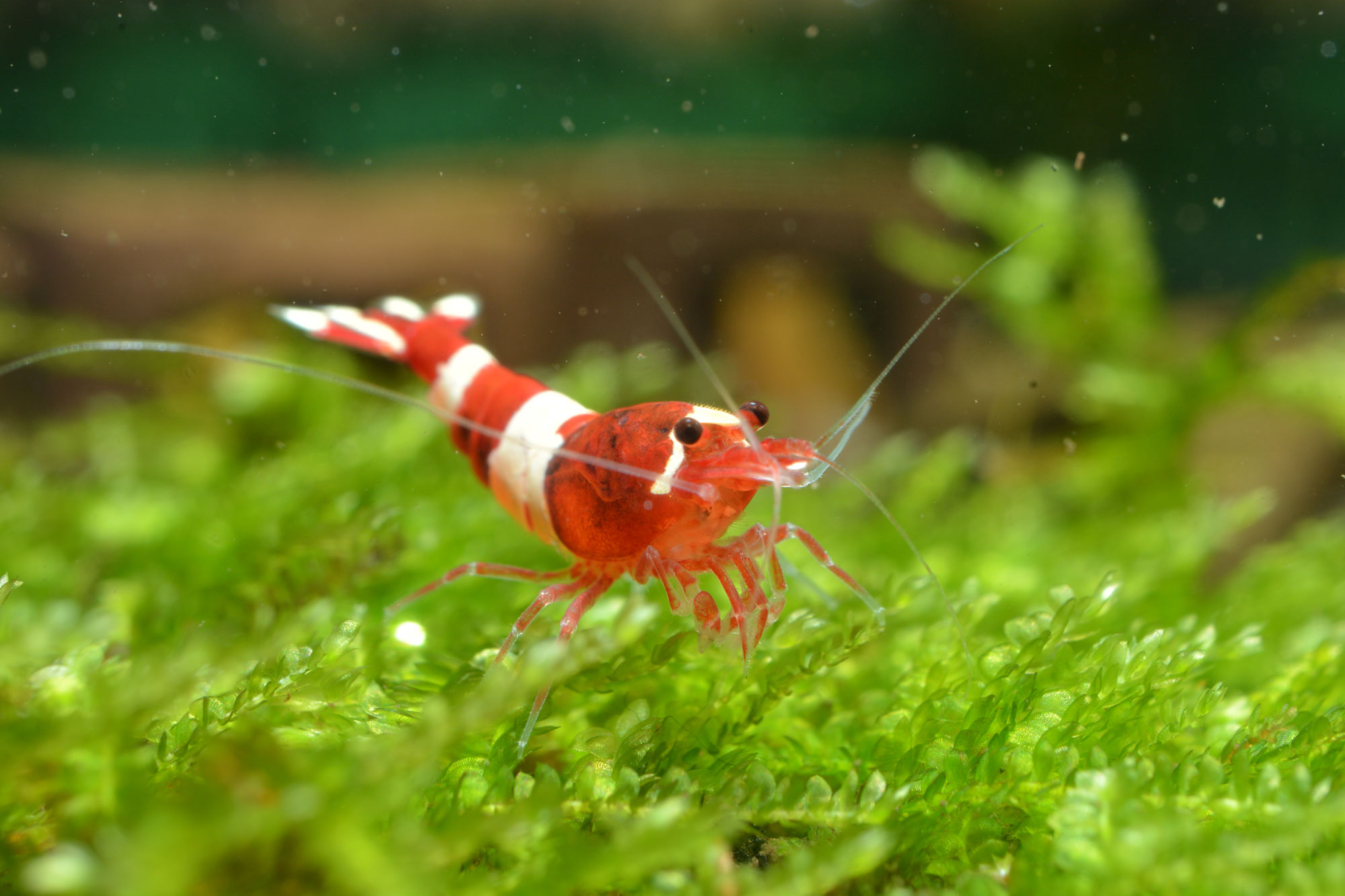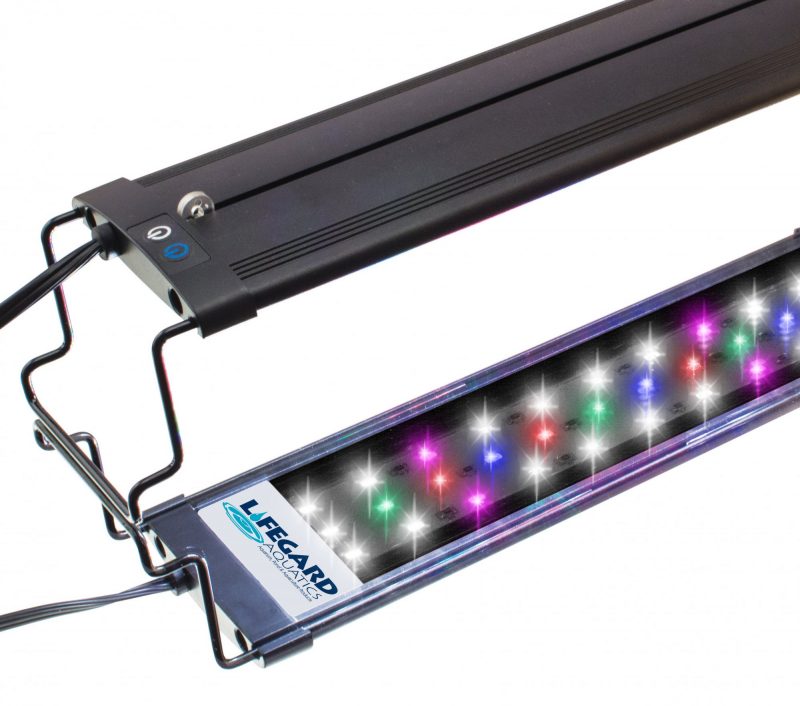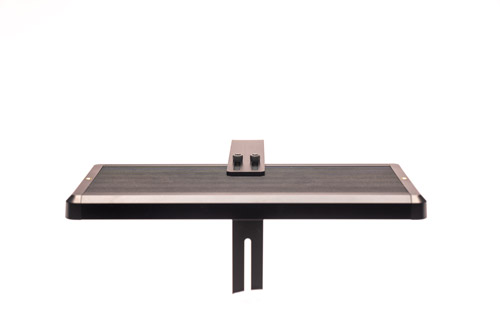Filtration
One of the most critical aspects of keeping planted aquariums is filtration. Aquarium filters promote airflow and sufficient oxygen to penetrate your tank. This helps to encourage good bacteria growth, remove debris, and effectively filter your water for optimal cleanliness. Having poor filtration means poor health of your plants, fish, and crustaceans. First, we’ll introduce the types of filters you’ll need to know about for your aquarium.
Hanging/power filters – are an affordable and simple way to provide filtration to planted aquariums. Typically, they are a noisy and somewhat distracting filter option, so most aquarists opt for a different filter that is quieter and more effective. One benefit to these filters is that they are relatively easy to set up and are actually quite durable. In addition, they are also a versatile option, since they are suitable for many types of fish. If you are looking for an easier setup and low maintenance filter, the hanging filter may be the best choice for you.
Canister filters – Aquarists choose the canister filter because it is hidden, not distracting from the overall appearance of your aquarium. In addition, the customization for filter media is a huge benefit, and many of the world’s most experienced aquarists opt for this filter type. Additionally, canister filters boast significantly larger volume than their other filter counterparts, making them a more effective choice in terms of filtration and good bacteria growth.
Internal/corner/box filters – These filters are typically air-driven with a pump, and are for use with small aquariums only (usually under 20 gallons.) These filter types are usually on the bottom of the tank, which helps to prevent debris from building up.They are a good, reliable filter type, however, with the popularity of aquascaping, many aquarists won’t use an internal, corner, or box filter for aesthetic reasons.
Wet/dry/trickle filters – When it comes to good bacteria growth, these filters are the best! They are called wet/dry or trickle filters due to their exposure to both air and water, which aids in the growth of good bacteria and purification of water. They are effective for both freshwater and saltwater tanks. However, these filter types aren’t used as much because they are high maintenance and clog easily.
Undergravel filters – Finally, we’ll cover the pros and cons of the undergravel filter. Due to the rising popularity of aquascaping, many aquarists don’t use this type anymore (since they are placed under the gravel bed, which would require re-scaping every couple months). THESE ARE NOT A GOOD OPTION FOR PLANTED TANKS. This is because plants are likely to wrap their roots around the filter. However, the undergravel filter has its benefits in a non-planted tank because it is invisible and it can keep your aquarium bed exceptionally clean.











